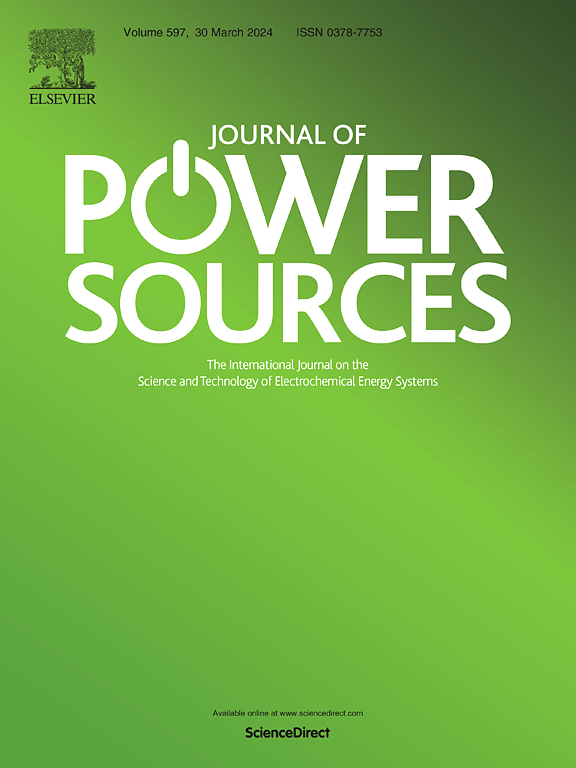Polyaniline intercalated lithiation‐assisted exfoliation of MoS2 cathode enables ultra-high rate and durable rechargeable magnesium ion batteries
IF 8.1
2区 工程技术
Q1 CHEMISTRY, PHYSICAL
引用次数: 0
Abstract
The commercialization of rechargeable magnesium ion batteries (MIBs) faces a critical challenge in exploiting high-performance cathodes, owing to the sluggish kinetics resulting from the robust Coulombic interaction between doubly charged Mg2+ ions and the intercalation host. Herein, a polyaniline (PANI) intercalated lithiation‐assisted exfoliation of MoS2 (Lix-MoS2@PANI) cathode is developed through an initial chemical lithiation and delamination of commercial MoS2 with n-butyllithium, followed by in-situ growth of PANI into the MoS2 interlayers. Notably, the obtained Lix-MoS2@PANI displays a graphene-like nanosheet morphology with the interlayer spacing expanded to around 0.74–1.09 nm. The down-sizing of the exfoliated MoS2 and expanded interlayer spacing could efficiently shorten ion diffusion distance and improve Mg2+ diffusion kinetics by weakening the strong Mg2+-host interactions. Moreover, the intercalated PANI is expected to enhance the conductivity and accommodate the volume changes upon prolonged cycling. The synergistic effects of the above boost the electrochemical performance of Lix-MoS2@PANI cathode, achieving high specific capacity, excellent rate capability even at an ultra-high rate of 15.0C and unprecedented long-term cycling stability with a reversible capacity of 140.5 mAh g−1 at 15.0C up to 2800 cycles. This work offers an efficient and universal modification strategy to rational design high-performance intercalation-type cathodes for MIBs.

求助全文
约1分钟内获得全文
求助全文
来源期刊

Journal of Power Sources
工程技术-电化学
CiteScore
16.40
自引率
6.50%
发文量
1249
审稿时长
36 days
期刊介绍:
The Journal of Power Sources is a publication catering to researchers and technologists interested in various aspects of the science, technology, and applications of electrochemical power sources. It covers original research and reviews on primary and secondary batteries, fuel cells, supercapacitors, and photo-electrochemical cells.
Topics considered include the research, development and applications of nanomaterials and novel componentry for these devices. Examples of applications of these electrochemical power sources include:
• Portable electronics
• Electric and Hybrid Electric Vehicles
• Uninterruptible Power Supply (UPS) systems
• Storage of renewable energy
• Satellites and deep space probes
• Boats and ships, drones and aircrafts
• Wearable energy storage systems
 求助内容:
求助内容: 应助结果提醒方式:
应助结果提醒方式:


